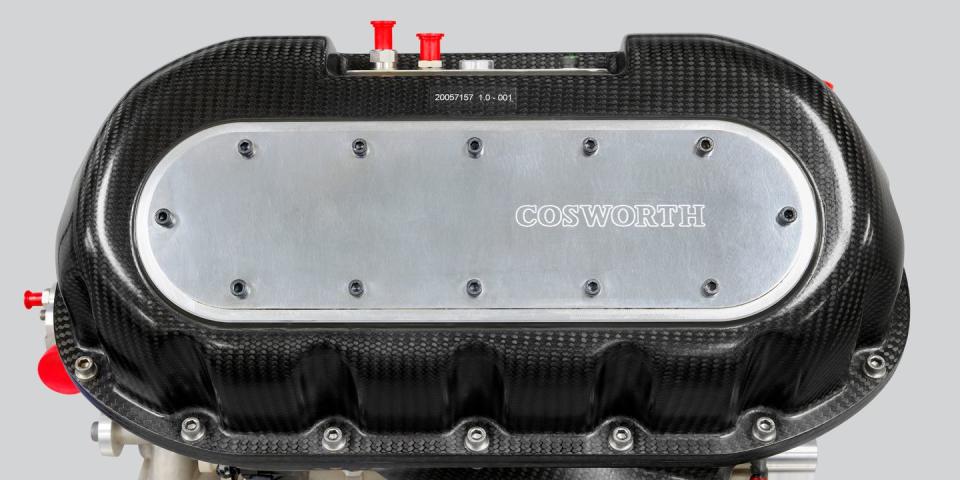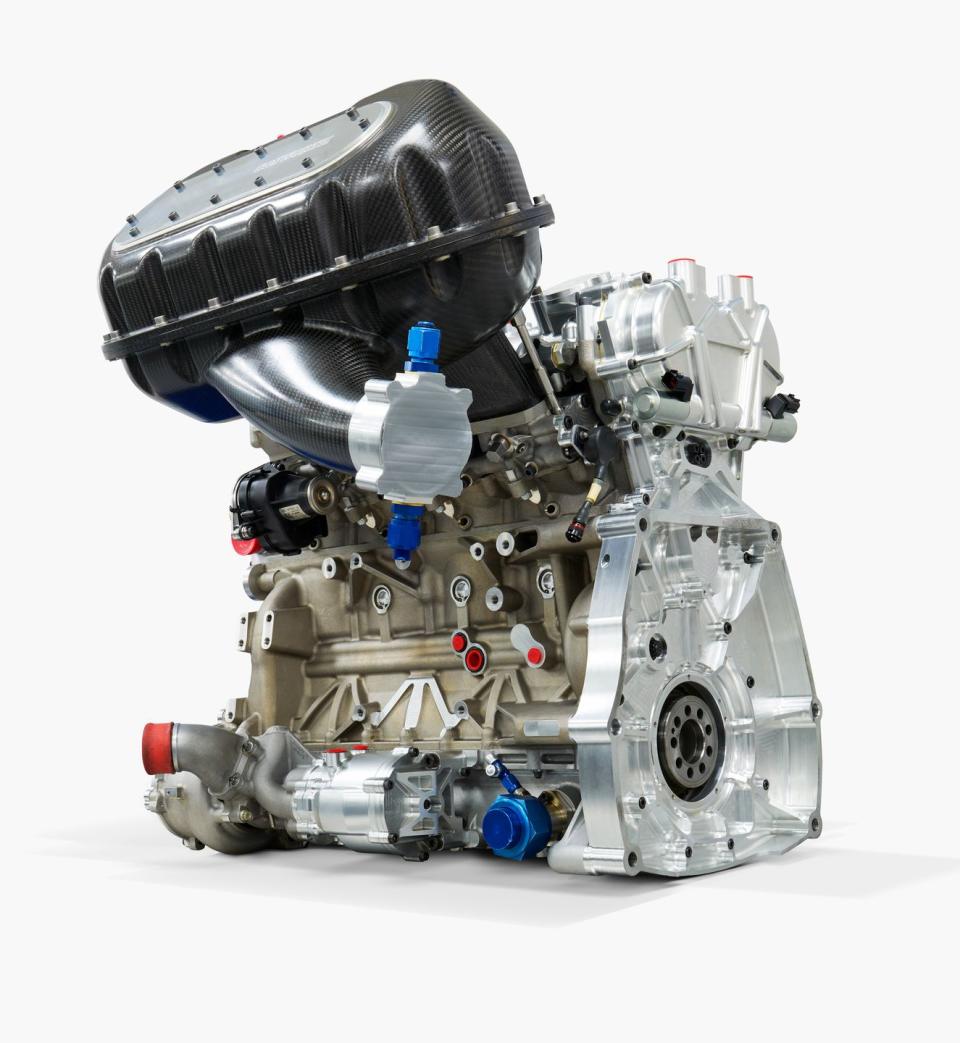The Three-Cylinder Engines that Birthed V-12s

Imagine you’re in charge of powertrain development at Cosworth, the legendary English firm with fingerprints all over racing. Two separate automakers—Aston Martin and Gordon Murray Automotive—have brought a challenge: build a free-revving, naturally aspirated V-12 able to meet today’s strict emissions standards. GMA wanted 650-plus horses from 4.0 liters for its T.50 supercar; Aston Martin wanted 6.5 liters and 1000 hp for its Valkyrie hybrid hypercar. How do you proceed?
This story originally appeared in Volume 6 of Road & Track.
SIGN UP FOR THE TRACK CLUB BY R&T FOR MORE EXCLUSIVE STORIES
You’d figure the answer lies in a microchip. Render a V-12 engine in ones and zeros and tweak a million variables until you nail it. You could fiddle for thousands of hours without ever having to machine, cast, forge, or weld a single physical part. Computer simulation is key for Cosworth, but it doesn’t show a complete view of internal combustion.
“Imagine a piston,” says Bruce Wood, managing director of powertrains at Cosworth. “When the engine’s running and the fuel enters the cylinder, you get fuel trapped behind the piston rings, which doesn’t burn until after the main combustion. That’s really bad for emissions.”
That tiny bit of fuel doesn’t impact power much, and for most of the history of the engine, it was ignored. But this uncontrolled combustion can upset the tightly metered emissions of a modern engine. Cosworth had to know how that trapped fuel would affect the cleanliness of these V-12s.
With so many variables at play—piston temperature, engine speed, airflow through the cylinder head—it’s difficult to accurately model uncontrolled combustion events through simulation. “Maybe we know 85 percent of what’s going on in the combustion chamber,” Wood says.
So Wood and his team went analog, building a three-cylinder test mule for each V-12 project. This hands-on solution seems a bit retrograde at first. But assembling and testing hunks of spinning metal gave Cosworth granular data unmatched by computer simulation.
Building mighty miniatures was straightforward for a company like Cosworth. A V-12 engine subdivides nicely, first into a straight-six, then on down to an inline-three. Since Cosworth was most concerned with combustion and emissions data, the cylinder head on each mule had to scale up to the full-size engine exactly. For everything below the top of the piston, as long as bore and stroke mirrored the intended dimensions of the full V-12, the rotating assembly and the basic engine block could be adapted from previous Cosworth inline-fours.
“Suddenly within the space of about five months, we were up and running,” Wood says. “Within a week or two, we were able to say, ‘Okay, we will pass emissions. We’ve done it.’ A good seven, eight months ahead of running the V-12, we had validated our simulations.”
The mini-mules paid dividends in time and cash.
“To design, develop, and manufacture a whole brand-new-from-scratch V-12 and then get it on the dyno to start looking at emissions is a good 13, 14 months,” Wood says. “Every day that we couldn’t guarantee we were going to deliver the emissions and performance was a commercial risk.”

Luckily for Cosworth, both mules verified that the simulations were within a few percent of reality. Correlating that data to a full-size V-12 is more complex than simply multiplying by four: Parasitic losses sap more horsepower from a tiny mule than a full-size V-12, and exhaust scavenging effect gives the 12-cylinder a slight emissions advantage. Off the top of his head, Wood says the Valkyrie three-cylinder made about 242 hp, a shade under a quarter of the target output.
“What we’ve found with both Valkyrie and Gordon Murray is that the performance of the V-12, both in power and emissions, is slightly better than just scaling up the three-cylinder,” he says.
Sadly, Cosworth never installed one of these three-cylinder test engines in a sports car; despite repeated requests, they wouldn’t ship one to me. But the mini-engines proved so useful, Cosworth used them for additional testing beyond emissions. “It was so close to a quarter of the 12-cylinder, we could actually do a lot of calibration on the three-cylinder and then port it over,” Wood says.
And how’d it sound on the dyno? “It doesn’t have the sheer rib-cage-shaking violence of [the V-12], but the [I-3] gives you a little taste,” Wood says.
Despite the vintage vibe of this form of testing, the use of small-scale engine mules is a recent addition to Cosworth’s arsenal. While the company does all kinds of full-scale torture tests, its first use of a mini-mule was in 2015. Nissan drafted Cosworth to build a 3.0-liter twin-turbo V-6 for the GT-R LM Nismo endurance race car. The British engineering firm put together an inline-three mule to gather fuel-economy data.
Now, given the success (and time savings) of the Aston and GMA three-cylinder test mules, Wood says we’ll see lots of micromotors in Cosworth’s future. “We’re never going to do an engine again where we don’t do a mule,” he says.
“Any development engine like this is expensive,” Wood says. “But the thing you’re buying is time. I wouldn’t put a price on the months we gained. If nothing else, it gives us an extra six months of sleep at night.”
SIGN UP FOR THE TRACK CLUB BY R&T FOR MORE EXCLUSIVE STORIES
You Might Also Like

 Yahoo Autos
Yahoo Autos 